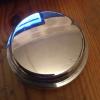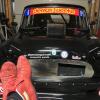10 to 15%? Sorry, can't say I've ever seen that much of a gain.
That sounds like an awful lot of power to be grinding in to the thrust washers, do you think they'd stand up to that?
These days with modern cars, they are trying to drag every ounce of gain and minimise every gram of losses, I've of no doubt that if the losses from Helical gears were as high as 5% they'd go to Herringbone gears to reduce the loses while keeping their drive trains quiet.
Of course you are only basing your theory on all the load going through the thrusts. The thrusts work differently than bronze bearings, the main reason for bronze bearing failure is incorrect clearances causing judder, this doesn't occur on thrusts as they are under load or not depending on whether or not you are accelerating or decelerating.
What you are seriously forgetting is the wiping effect that helical gears have as they mesh and un-mesh, this is where a lot of your losses occur.
Modern production car gears are cut, heat treated then ground, this gives them a far better surface quality than any Mini gears thus a reduced friction due to better oil retention on the mating surfaces, leading to less metal to metal contact.
The reason you won't see herringbone gears in a production car is their cost is far too high, to machine a herringbone gear of the sizes we would need would require a larger case to fit them into as the gears would have to be wider.
Gears could be rolled, that would maintain the current width, but then how would you grind them round* ? Then there is the distortion due to the heat treatment process.
*The forming process would distort the gears as they are being rolled and grinding is the current method to make them round again.
With herringbone gears there is currently a requirement for a radial groove (tool clearance groove) along the centreline, eg. as the left cutter cuts towards the center it needs a clearance groove to "fall in to" otherwise a wall of swarf would build up and very soon, bang goes you £2000 cutter, the same goes for the right hand cutter.
No, herringbone gears won't be used in production cars for some time yet, even with 3D printed gears the advantages may not be worth i
Edited by MRA, 29 June 2016 - 11:39 AM.


















